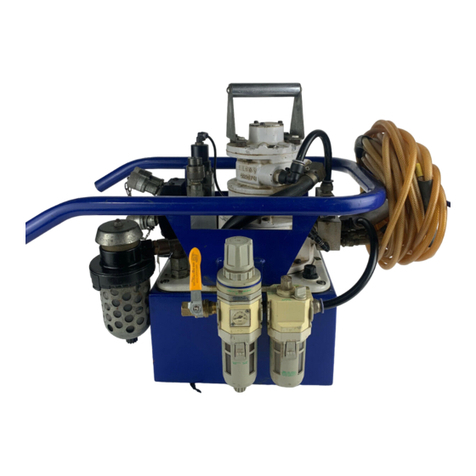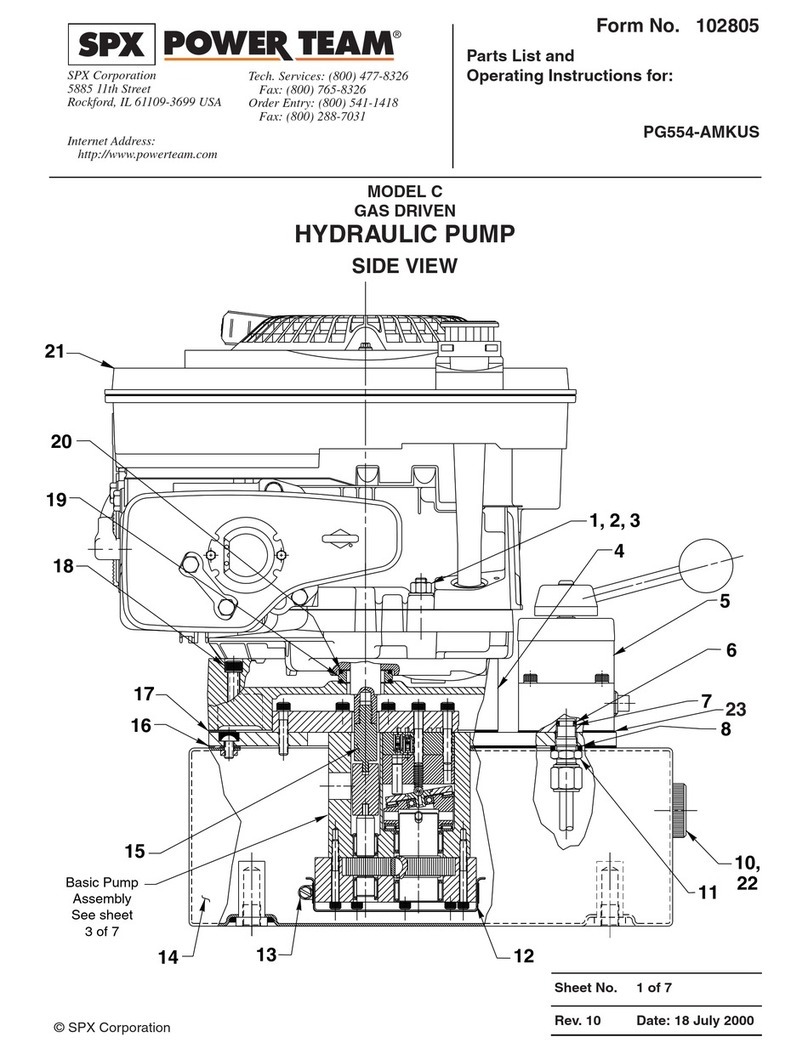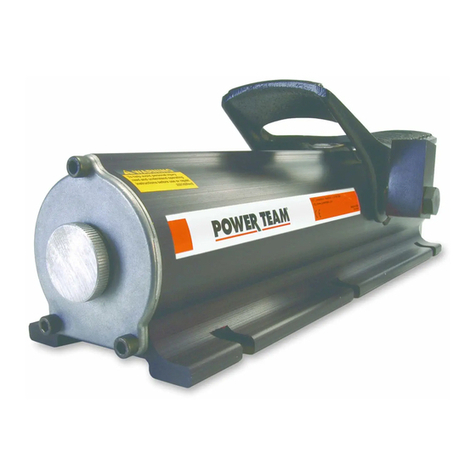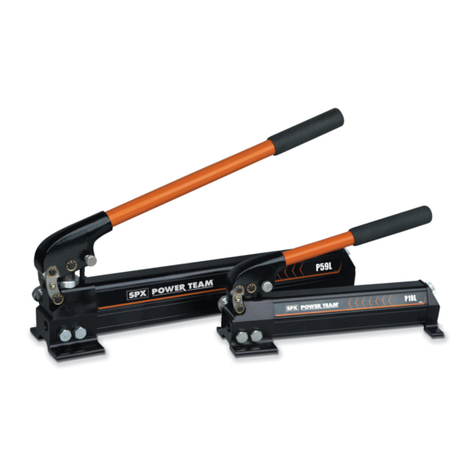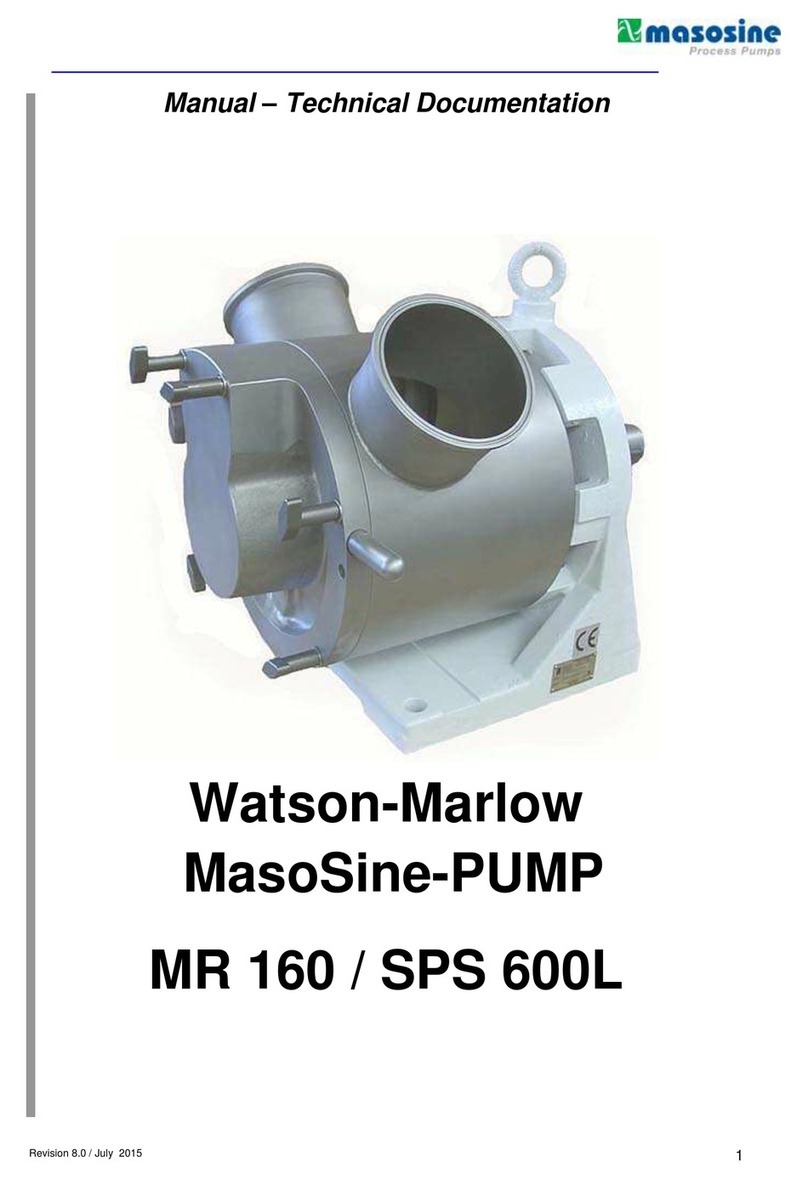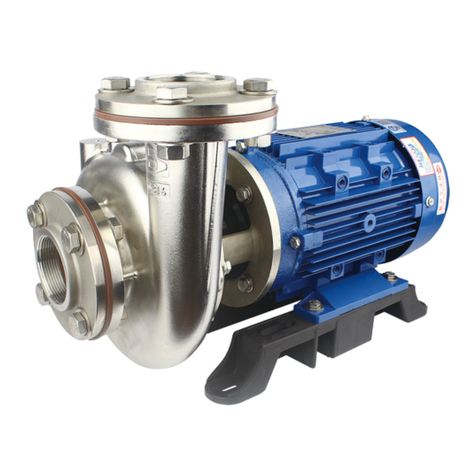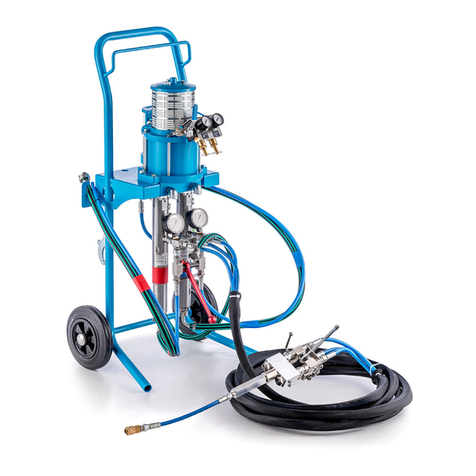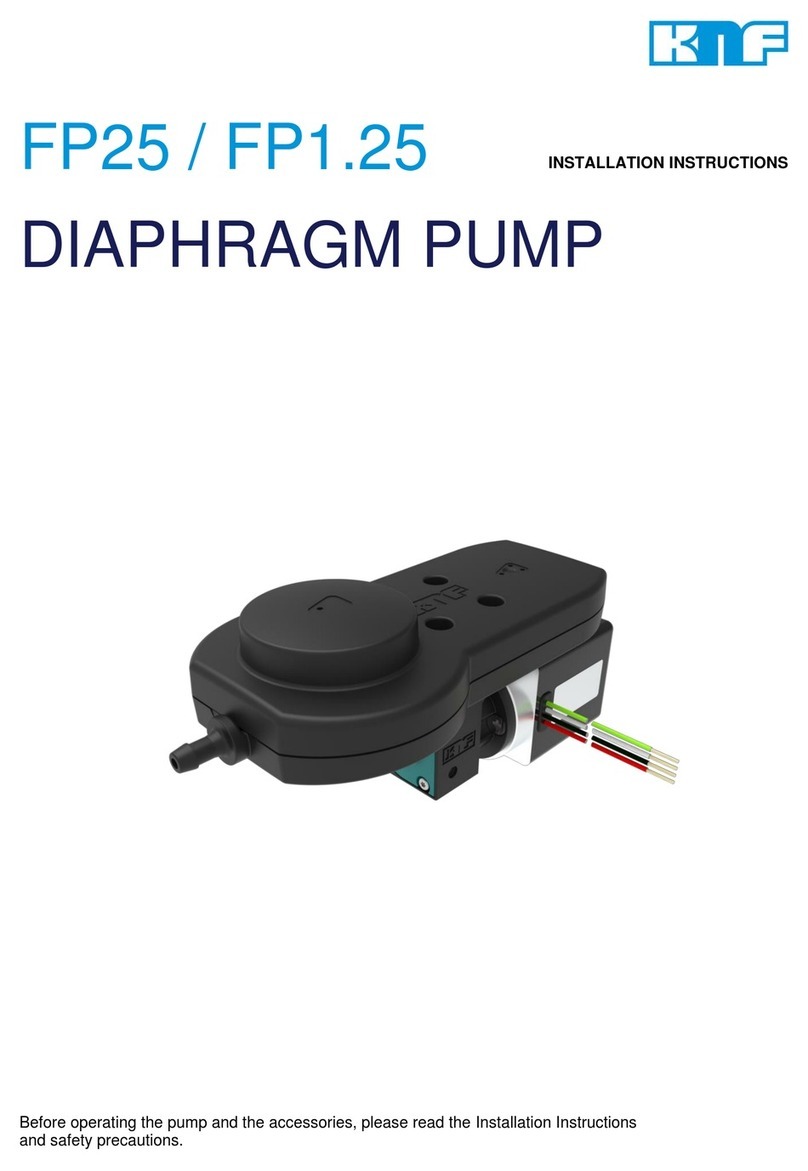SPX POWER TEAM PE18 Series User manual

MODE C & D
HIGH SPEED
HYDRAU IC PUMP
Read and carefully follow these instructions. Most problems with new equipment are caused by improper operation or
installation.
SAFETY PRECAUTIONS
WARNING: To help prevent personal injury,
HYDRAU IC HOSE
●Before operating the pump, tighten all hose connections with the proper tools. Do not overtighten.
Connections should only be secure and leak-free. Overtightening can cause premature thread failure or
high pressure fittings to split at pressures lower than their rated capacities.
●Should a hydraulic hose ever rupture, burst, or need to be disconnected, immediately shut off the pump
and shift the control valve twice to release all pressure. Never attempt to grasp a leaking pressurized
hose with your hands. The force of escaping hydraulic fluid could cause serious injury.
●Do not subject the hose to potential hazard such as fire, sharp surfaces, extreme heat or cold, or heavy
impact. Do not allow the hose to kink, twist, curl, or bend so tightly that the oil flow within the hose is
blocked or reduced. Periodically inspect the hose for wear, because any of these conditions can damage
the hose and result in personal injury.
●Do not use the hose to move attached equipment. Stress can damage the hose and cause personal injury.
●Hose material and coupler seals must be compatible with the hydraulic fluid used. Hoses also must not
come in contact with corrosive materials such as creosote-impregnated objects and some paints.
Consult the manufacturer before painting a hose. Never paint the couplers. Hose deterioration due to
corrosive materials can result in personal injury.
PUMP
●Do not exceed the PSI rating noted on the pump nameplate or tamper with the internal high pressure
relief valve. Creating pressure beyond rated capacities can result in personal injury.
●Before adding oil, retract the system to prevent overfilling the pump reservoir. An overfill can cause
personal injury due to excess reservoir pressure created with cylinders are retracted.
CY INDER
●Do not exceed the rated capacities of the cylinders. Excess pressure can result in personal injury.
●Do not set poorly-balanced or off-center loads on a cylinder. The load can tip and cause personal injury.
POWER SUPP Y
●All electrical work must be done by a qualified electrician.
●Disconnect the power supply before removing the electrical box cover or performing repairs and
maintenance.
●Never use an ungrounded (two-prong) extension cord with this unit.
Form No. 102355
2P-5500
2P-5550
4030
4031
4032
4033
4035
4036
4037
89300-00
201905
D-01023-AA
D-01026-AA
PE18 Series
Y27 Series
Operating Instructions for:
Sheet No. 1 of 4
Rev. 2 Date: 24 August 2009
SPX Hydraulic Technologies
5885 11th Street
Rockford, IL 61109-3699 USA
Tech. Services: (800) 477-8326
Fax: (800) 765-8326
Order Entry: (800) 541-1418
Fax: (800) 288-7031
SPX Corporation
655 Eisenhower Drive
Owatonna, MN 55060-0995 USA
Phone: (507) 455-7000
Tech. Services: (800) 533-6127
Fax: (800) 955-8329
Order Entry: (507) 455-1480
Fax: (800) 283-8665
International Sales: (507) 455-7223
Fax: (507) 455-7746
®
®
powerteam.com
© SPX Corporation

Operating Instructions, Form No. 102355, Back sheet 1 of 4
SET-UP
Hose Connections
1. Clean all areas around the oil ports of the pump and cylinder.
2. nspect all threads and fittings for signs of wear and damage. Replace as needed. Clean all hose ends, couplers,
or union ends.
3. Remove thread protectors from hydraulic oil outlets. Connect the hose assembly to the hydraulic oil outlet, and
couple the hose to the cylinder.
IMPORTANT: Seal all pipe connections with an approved thread sealant. Teflon tape can also be used to seal
hydraulic connections if only one layer of tape is used. Apply the tape carefully to prevent it from being
pinched by the coupler and broken off inside the pipe end. Any loose pieces of tape could travel through the
system and obstruct the flow of oil or cause jamming of precision parts.
4. Refer to Figure 1.
OPERATION
a. f your pump has a two-way, three-way or automatic
valve, attach one end of the hose to port "C" and the
other end of the hose to advance port "B" of the cylinder.
b. f your pump has a four-way valve for operating double-
acting cylinders, attach one hose between the upper port
"A" on the pump and the return port "D" of the cylinder.
Attach a second hose between the lower port "C" on the
pump and the advance port "B" on the cylinder.
1. Open the filler plug two full turns to vent the reservoir.
2. Place the control valve in the neutral position. (Refer to the
following information about valves.)
3. nsert the power cord into an outlet.
WARNING: To help prevent personal injury, check the
voltage rating on the motor nameplate to be sure the outlet
has the right voltage.
Priming The Pump
1. Back the priming screw out two complete turns. See Figure 2.
2. Jog the pump three times.
3. Tighten the priming screw to 15-25 in. lbs.
Two-Way Valve
(use with single-acting cylinders)
1. Turn the valve handle all the way clockwise. Back the handle
out until it reaches the stop. Always start the pump in this
neutral position.
2. Using the toggle switch, jog the motor several times. Place the
switch on RUN, and let the pump idle for a few minutes.
3. To advance the cylinder, turn the valve handle in all the way
clockwise. See Figure 3.
4. To retract the cylinder, turn the valve handle counterclockwise
until it reaches the stop. See Figure 3.
5. Place the cylinder at a lower level than the pump. Advance
and retract the cylinder several times to remove air from the
hydraulic system.
Figure 2
Figure 3
Figure 1

Operating Instructions Form No. 102355
Figure 4
Figure 5
Automatic Valve
(use with single-acting cylinders only)
NOTE: Pumps with an automatic valve do not have a valve handle. The valve is built into the unit and should
be used only with single-acting cylinders.
1. Place the cylinder lower than the level of the pump.
2. Start the motor to extend the cylinder. When the cylinder reaches the end of its stroke, stop the motor. The
cylinder automatically returns.
3. Extend and return the cylinder several times to remove air from the hydraulic system.
PREVENTIVE MAINTENANCE
WARNING: To help prevent personal injury, disconnect the pump from the power supply before
performing maintenance or repair.
Periodic Cleaning
IMPORTANT: The greatest single cause of failure in hydraulic pumps in dirt. Keep the pump and attached
equipment clean to prevent foreign matter from entering the system.
1. Use only clean hydraulic oil, and change oil after every 300 hours of use.
2. Seal the hydraulic oil outlet and all unused couplers with thread protectors when the pump is not in use.
Three-Way Valve
(use with single-acting cylinders)
1. Place the valve handle in the neutral position as shown in
Figure 4.
2. Jog the motor toggle switch several times. Place the switch
on RUN, and let the pump idle for a few minutes.
3. To advance the cylinder, position the valve handle as shown
in Figure 4. Place the valve handle in neutral again to stop
the cylinder and hold pressure.
4. To retract the cylinder, position the lever as shown in Figure
4. Place the valve handle in neutral to stop the cylinder.
5. Place the cylinder at a lower level than the pump. Advance
and retract the cylinder several times to remove air from the
hydraulic system.
Four-Way Valve
(use with double-acting cylinders)
WARNING: To help prevent personal injury, the
retract port on a double-acting cylinder must be
unrestricted when extending the cylinder.
1. Place the valve handle in the neutral position as shown in
Figure 5.
2. Jog the motor toggle switch several times. Place the switch
on RUN, and let the pump idle for a few minutes.
3. To advance the cylinder, position the valve handle as shown
in Figure 5.
4. To retract the cylinder, position the lever as shown in Figure
4. Place the valve handle in neutral to stop the cylinder.
5. Place the cylinder at a lower level than the pump. Advance
and retract the cylinder several times to remove air from the
hydraulic system.
Sheet No. 2 of 4
Rev. 2 Date: 24 August 2009

Operating Instructions, Form No. 102355, Back sheet 2 of 4
Bleeding Air From The System
Air can accumulate in the hydraulic system during the initial set-up or after prolonged use causing the cylinder to
respond slowly or in an unstable manner. To remove the air:
1. Open the filler plug two full turns.
2. Place the cylinder at a lower level than the pump.
3. Extend and retract the cylinder several times without putting a load on the system. Air will be released through the
pump reservoir.
IMPORTANT: Some spring return cylinders have a capacity in the rod that forms an air pocket. Bleed this
type of cylinder when positioned upside down or lying on its side with the port facing upward.
Hydraulic Fluid evel
1. Check the oil level in the reservoir after every 10 hours of use. The correct level of oil is 1/2" from the top the filler
plug hole with all cylinders retracted.
2. Drain, flush, and fill the reservoir with approved high-grade hydraulic oil after every 300 hours of use. The
frequency of oil changes will depend upon working conditions and the overall amount of use and maintenance
given the pump.
Draining And Flushing The Reservoir
The reservoir should be drained and flushed with a nonflammable flushing fluid after every 300 hours of use.
IMPORTANT: Clean the outside of the pump first to keep dirt from entering the reservoir.
1. Remove the four screws that fasten the pump assembly to the reservoir. Carefully remove the pump assembly
from the reservoir without damaging the gasket, filter, or safety valves.
2. Clean the inside of the reservoir, and fill it with a nonflammable flushing oil. Rinse the filter clean.
3. Place the pump assembly on the reservoir again, and secure it with two of the four screws assembled in opposite
corners of the pump housing.
4. Start the pump and let it idle for several minutes. IMPORTANT: Run the pump with the valve in neutral, or run
the hose back to the reservoir. Do NOT build pressure.
5. Remove the pump assembly from the reservoir again. Drain and clean the reservoir.
6. Fill the reservoir to 1/2" from the top of the filler hole with an approved high-grade hydraulic oil.
7. Place the pump assembly (with gasket) on the reservoir. Assemble the four reservoir screws again and tighten
securely.
Adding Oil To The Reservoir
1. Retract the cylinder, and disconnect the power supply.
2. Clean the area around the filler plug. Remove the filler plug, and insert a clean funnel with a filter.
3. Fill with approved, high-grade hydraulic oil (215 SSU @ 100° F) to 1/2" from top of filler hole.
Checking Brushes on Universal Motors
To help prevent premature failure of the armature
the brushes should be checked periodically.
1. Remove the brush holder caps and brush assemblies.
2. Replace the brush assemblies if they are 1/4" long or less.
See Figure 7.
3. nstall brush assemblies and brush holder caps.
Figure 6
Figure 7
Note: Shaded areas reflect last revision(s) made to this form.
7/8"
(new)
Replace when
1/8" lg. or less
ubrication
To check the level of lubricant in the gear box:
1. Mark the motor housing parts for alignment during reassembly.
2. Remove the four machine screws holding the motor assembly to the pump housing.
See Figure 6. Lift the motor assembly away from the pump housing to uncover the
gear box.
3. f the largest driving gear is not completely covered by oil, add SAE 90 gear
lubricant.
4. Assemble the motor to the pump housing again, aligning the marks made in Step 1.

Operating Instructions Form No. 102355
OPTIONA ACCESSORIES
Pressure Regulating Controls
The pressure range for this pump is from 1000 PS to 10,000 PS . A pressure regulating valve can be adjusted to
bypass oil at a certain pressure setting while the pump continues to run. A pressure switch can be adjusted to stop
the pump motor at a certain pressure setting. Once the pressure falls below the setting, the switch starts the motor
again.
Generally, a pressure switch should be used with a pressure regulating valve. A pressure switch stops the motor at a
selected setting, but the hydraulic pump continues building pressure as it slows to a stop. A pressure regulating valve
bypasses this oil, preventing it from going into the system. As a result, the pressure differential can be held at about
300 PS across the pressure range.
Adjusting The Pressure Switch
NOTE: The pressure regulating valve should be set
first
at the desired maximum pressure.
1. See Figure 7. Loosen the locknut (C) on the pressure switch (B). Slowly turn the adjusting screw (E)clockwise to
increase the pressure setting.
2. Place the control valve in the advance position. Place the motor toggle switch on RUN. With the pump running
and bypassing oil at the desired pressure, slowly turn the adjusting screw (E) counterclockwise, decreasing the
pressure switch setting until the pump motor shuts off. Tighten the locknut (C) again.
3. Release pressure. Move the control valve to advance again, and check the pressure setting and motor cut-out. t
may be necessary to make a second adjustment.
A pressure switch can be used alone for operating other electrical devices (motors, solenoids, relays, etc.) located
elsewhere in the circuit.
Adjusting The Pressure Regulating Valve
NOTE: For easy adjustment of the pressure regulating valve, adjust
pressure by INCREASING to a desired pressure setting.
1. See Figure 8. Loosen the locknut (A) on the pressure regulating valve. Using
a screwdriver, turn the adjusting screw (D) a few turns counterclockwise to
decrease the pressure setting.
2. Connect the pump's power supply, and place the valve in the advance
position. Place the motor control toggle switch on RUN.
3. Slowly turn the adjusting screw (D) clockwise to gradually increase the
pressure setting. When the desired pressure setting is reached, lock the
adjusting screw in position by tightening the locknut (A).
Amperage Draw
This pump can be used with portable generators because of the relatively low
amperage draw of the electric motor. The standard 115 volt motor has a maximum
amperage draw of 12 amps; optional 230 volt motor has a maximum amperage
draw of only six amps.
Hydraulic Gauge
1. Remove the pipe plug from the gauge port located above the
hydraulic outlet port(s). See Figure 9.
2. Apply a small amount of pipe thread sealant or teflon tape on the
gauge threads, and insert the gauge into the port. DO NOT
OVERT GHTEN P PE CONNECT ONS!
Sheet No. 3 of 4
Rev. 2 Date: 24 August 2009
Figure 8
Figure 9

Operating Instructions, Form No. 102355, Back sheet 3 of 4
TROUB E-SHOOTING GUIDE
Depending on the type of pump, it is often best to check for leaks by using a hand pump and applying pressure to the
suspect area without the motor running. Watch for leaking oil and follow it back to its source. (This will not work on an
automatic valve pump, because there won't be any pilot pressure to close the valve.) f there is a crack in the pump
housing, oil can leak into the gear housing and be difficult to find. Always plug the outlet ports of the pump to
eliminate the tool or cylinder as the cause of the leakage.
PROB EM CAUSE SO UTION
WARNING: To help prevent personal injury,
●Trouble-shooting and repair work must be done by
qualified technicians who are familiar with this
equipment.
●Gauges and other equipment used during trouble-
shooting must be rated for 10,000 PSI.
Motor does not run
Motor hums but does not rotate
Hydraulic oil leaking into gear
case under motor
Pump is not delivering oil
1. Pump turned OFF.
2. Pump unplugged.
3. No voltage supply.
4. Broken lead wire or defective
power cord plug.
5. Defective remote switch.
6. Worn brushes.
7. Defective motor.
1. Broken gear has jammed power
train.
1. Damaged oil shaft seal and/or
o-ring seal.
2. Crack in pump body.
1. Oil level too low.
2. Pump is not primed.
3. Loose fitting coupler to cylinder.
4. Vacuum in reservoir.
5. Air in system.
6. Air leak in suction line.
7. Dirt in pump or filter plugged.
8. Oil bypassing through valve or
cylinder.
9. Cold oil or oil is too heavy (of a
higher viscosity than necessary)
1. Turn toggle switch ON.
2. Plug in pump.
3. Check line voltage.
4. Replace defective parts.
5. Check remote switch.
6. Replace brushes.
7. Replace defective parts.
1. Replace broken gear and correct
condition that caused failure.
1. Replace damaged seal(s).
2. Replace pump body.
1. Retract cylinders. Fill reservoir to
1/2" from top of filler hole.
2. Open priming screw - follow
instructions.
3. See if quick disconnect couplings
to cylinders are completely
coupled. Sometimes couplers
have to be replaced, because
the ball check doesn't stay open
due to wear.
4. Open filler plug two turns.
5. Bleed the system.
6. Tighten suction line.
7. Clean filter. Dismantle pump and
clean all parts, if needed.
8. Remove cylinder and see if
pump builds and holds pressure
against coupler at hose ends. f it
does, problem is in the cylinder.
f it doesn't, observe valve drain
line with pump running. f oil is
running out of drain line, problem
is in valve. f not the problem,
disassemble pump and check for
worn or damaged parts.
Conductors North American International
Line............................Black...................Brown
Neutral.......................White ..................Blue
Ground ......................Green ..................Green/Yellow
North American & International Color Codes

Operating Instructions Form No. 102355
PROB EM CAUSE SO UTION
Pump is not delivering oil (cont'd)
Pump delivers only enough oil to
advance cylinder(s) partially or
erratically
Pump builds but does not
maintain pressure
Pump does not build full pressure
10. Relief valve or low pressure
unloading valve set wrong.
11. Motor rotating wrong direction.
12. Defective control valve.
13. Sheared drive shift key.
1. Low oil level.
2. Air in system.
3. Reservoir capacity is too small
for size of cylinder.
1. Defective cylinder.
2. External leaks.
3. nternal leaks: Lift pump from
reservoir, keeping filter in oil.
Remove drain line and look for
leaks from valve.
4. Sheared drive shaft key.
1. Faulty pressure gauge.
2. External leakage.
3. Relief valve set wrong.
4. Cylinder is leaking.
5. Leaking valve.
6. Two-way valve: Valve seat
damaged. ( s oil leaking from
return lin?)
7. Three-/four-way valve: Valve
shear seals or o-rings
damaged. ( s oil leaking from
return line?)
8. Three-/four-way valve: Valve
rotor lapped surface damaged.
10. Adjust as needed.
11. Looking at motor shaft end,
motor must rotate clockwise.
Reverse lead wires to brush
holders, if necessary.
12. nspect all parts and replace, if
needed.
13. Replace key and determine
cause of key failure.
1. Retract cylinder(s). Fill reservoir
to 1/2" from top of filler hole.
2. Bleed air from system.
3. Use smaller cylinder or larger
reservoir.
1. Remove cylinder from pump. f
pump holds pressure, cylinder
is defective.
2. Seal leaking pipe fittings with
pipe sealant.
3. Clean, reseat or replace valve
parts. f needed, dismantle
check valve(s) and repair seat
areas, replace ball and washer.
4. Replace key and determine
cause of key failure.
1. Calibrate gauge.
2. Seal leaking pipe fittings with
pipe sealant.
3. Lift pump from reservoir,
keeping filter in oil. Note
pressure reading when relief
valve begins to open. Adjust if
needed.
4. Remove cylinder from pump. f
pump builds full pressure,
cylinder is defective.
5. Clean and reseat parts.
6. Replace valve seat stem or
reseat pump body.
7. Replace shear seals and/or
o-rings in valve.
8. Lap rotor surface or replace
motor.
Sheet No. 4 of 4
Rev. 2 Date: 24 August 2009

Operating Instructions, Form No. 102355, Back sheet 4 of 4
PROB EM CAUSE SO UTION
Pump does not build full
pressure (cont'd)
Cylinder(s) will not retract
Pump delivers excess oil
pressure
Automatic valve will not allow
pump to build full pressure
Automatic valve will not release
pressure
9. nternal leakage.
10. Sheared drive shaft key.
11. High pressure pump inlet or
outlet ball checks are leaking.
1. Check system pressure. f
pressure is zero, control valve is
releasing pressure and problem
could be in cylinder, linkage to
cylinder, or couplings.
2. Defective valve.
1. Relief valve set wrong.
1. Pilot pressure is too low.
2. Defective or oversize seat in
automatic valve.
3. Short rollers in low pressure
pump. A short roller will make
the pilot pressure erratic,
causing the valve to open
partially and bypass oil into the
reservoir past the ball seat.
1. Piston is sticking.
2. High pressure oil leaking past
the low-to-high pressure check
back to the piston in the
automatic valve, keeping the
piston closed.
9. Look for leaks around entire
inner mechanism. f there are no
visible leaks, the low-to-high
pressure ball check may be
leaking. Remove all parts. Look
for damage to the seat area in
the end plate body. Clean and
reseat, if needed. nspect the
ball for damage; replace if
necessary.
10. Replace key and determine
cause of key failure.
11. Seat or replace valve head.
1. Look for broken return springs in
cylinders. See if couplers are
completely coupled. Sometimes
couplers have to be replaced,
because one check does not
stay open due to wear.
2. nspect and/or replace parts.
1. Adjust relief valve.
1. ncrease pilot pressure.
2. Replace ball and seat.
3. Replace short roller(s).
1. Remove, clean and polish
piston.
2. Seat ball check and carefully
add greater spring force to ball.
(Too much force causes priming
problems.)
This manual suits for next models
14
Table of contents
Other SPX POWER TEAM Water Pump manuals
Popular Water Pump manuals by other brands
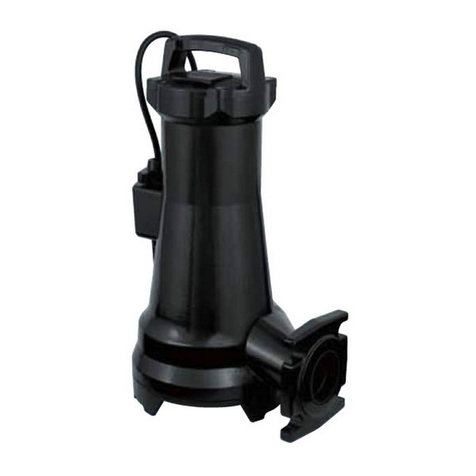
Espa
Espa DRAINEX 400 instruction manual

Denison Hydraulics
Denison Hydraulics Goldcup Series Service information

Alarko
Alarko OPTIMA Installation and operating instructions
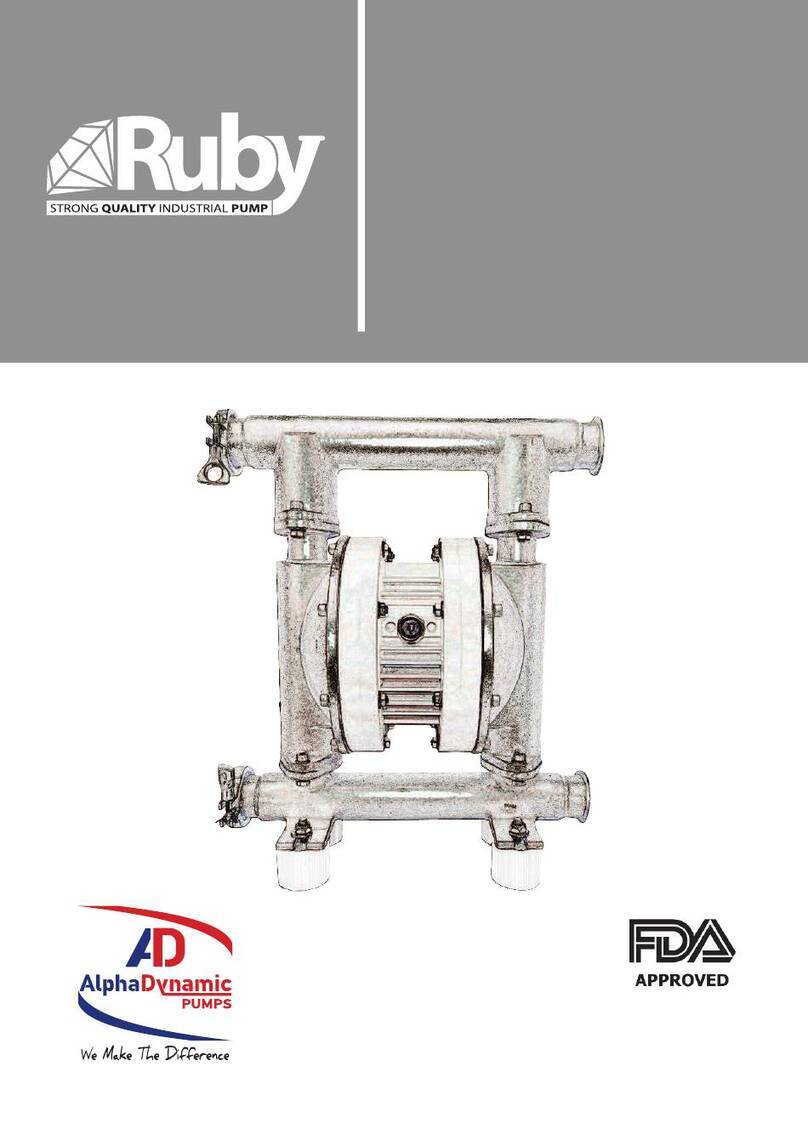
ALPHA DYNAMIC PUMPS
ALPHA DYNAMIC PUMPS Ruby 040 FDA Installation, operation and maintenance manual
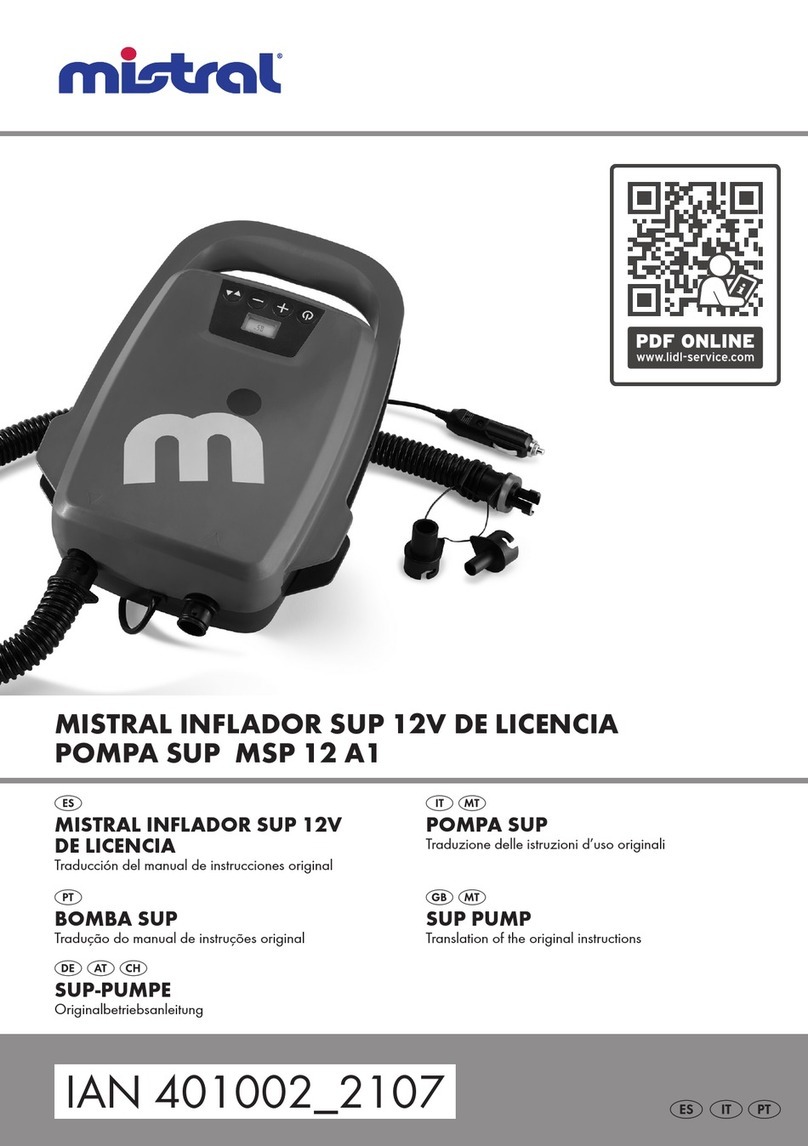
Mistral
Mistral MSP 12 A1 Translation of the original instructions

sauermann
sauermann Si-82 manual

